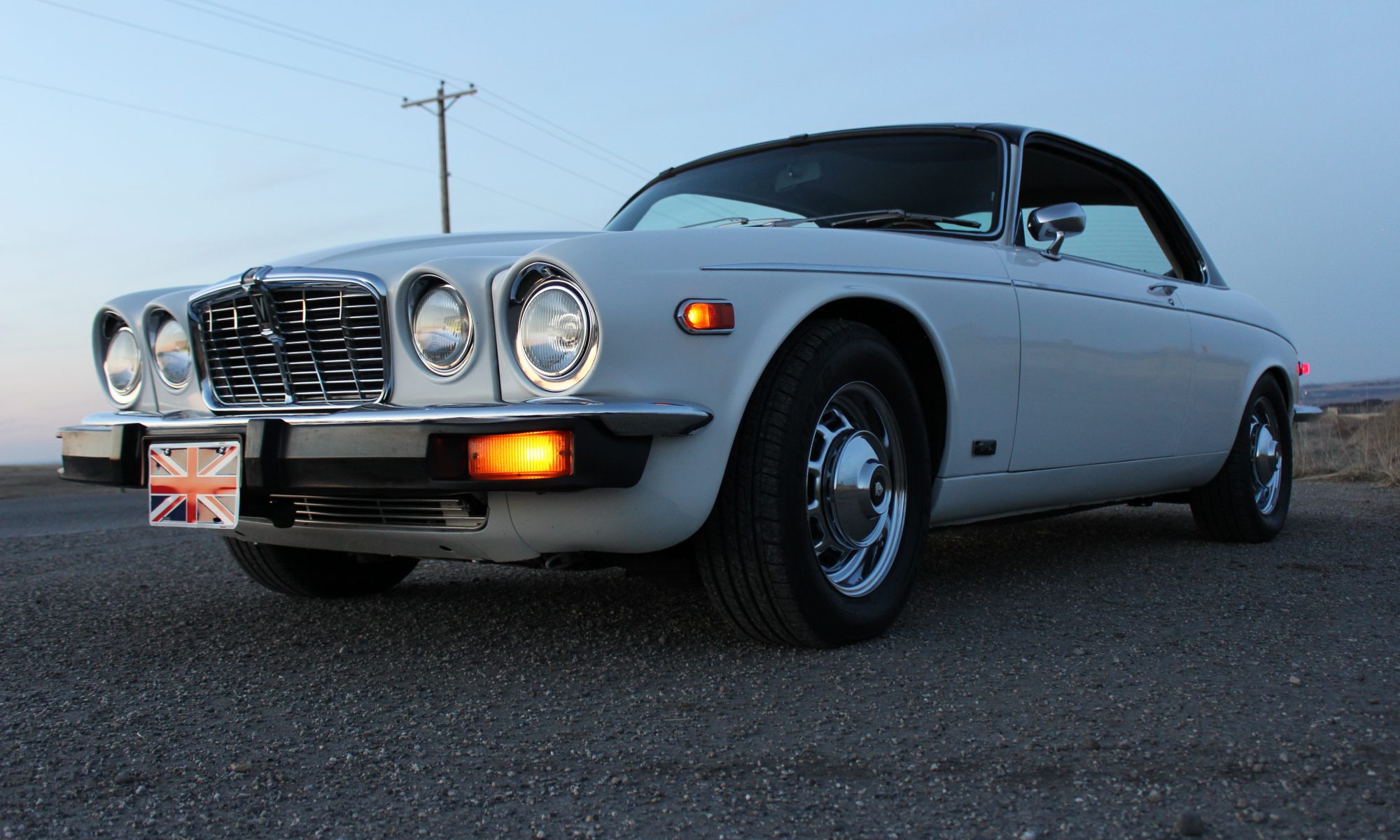I am finally to the point of installing the new fuel rail. I started with a rail from an HE XJ-S. It was well worn when it arrived so I cleaned it up and sent it off to get zinc oxide plated in the original color.
Next up was sourcing all the necessary parts.
The key part to keep this simple and clean was the M14 x 1.5 to 5/16″ adapter (yellow circle) from SpeedFlow . This made the fuel rail connections a cinch.
Next up was to install the injectors to the rail.
There has been lots written on whether to clamp the fuel line to the barbs or not, but I lean toward using the approach that Jaguar originally took and used fuel hose designed for push on applications and the original style dished washers on each end.
I trial fitted by first installing only injectors 6A and 6B. There was a clearance problem at the throttle cable mount location
I decided to both shorten the hoses and raise the throttle switch pedestal. The original hoses used with this type of fuel rail were about 4″ long for 1A and 1B with all of the others just over 2″. The shortest possible hose to use is just over 1 inch, but in my case I needed more height for the fuel pressure sensor to clear the intake manifold. I ended up using hoses that were 3.1″ at 1A and 1B and 1.25″ in all other locations. Lowering the rail this much put too much of a bend at 1A and 1B so the hoses kinked. I picked up some 5/16″ springs and used them inside the hoses to keep them from kinking in those locations.
I was pretty pleased with myself when I came up with the idea to reuse the spacers removed with the air injection rail to raise the throttle pedestal.
I will now need to completely go through all of the throttle operating adjustments as the cable and rods will be too short.
The fuel hose runs are much simpler than before the retrofit.
The later fuel rails had a mounting location for a temp sensor. Later fuel injection systems would deal with the vapor lock issue by slightly increasing the fuel pressure in the rail when the rail temp was high. I drilled through this mounting location into the rail and found an adapter that would work with my previously installed fuel pressure transducer and gauge.
I will write up the fuel and water temp gauge installation in a later post.
Now to go through all of the throttle adjustments and then install the fancy aftermarket air intakes……
Update: I had purchased a 5/8″ NPT to 1/8″ NPT adapter for the pressure sensor. As soon as the rail was pressurized this fitting leaked so the threads on the rail must not be NPT. The rail came with a bolt as a plug in this location, so I drilled and tapped the bolt for 1/8″ NPT and mounted the sensor (with some thread sealant for good measure)…….no leaks.
Well……it seems the threads on the plug are not tight enough. I was getting a slow weeping of fuel around the plug threads, so I took the easy way out. I removed the fuel rail again and took it into a local machine shop. They found a bolt that could tighten well, used thread lock instead of thread sealant and tapped the bolt for my sensor. It is now tight and I can verify there is no fuel smell from the engine bay.
Results from vapor lock project: Over the summer, I was able to put over 1,500 miles on the car. This included many trips to car shows or visiting my daughter over 70 miles away. Some of these trips were in 90 degree temperatures.
Here is a reminder of the problem I have had on and off since buying the car in ’98. On hot days, after the car has been shut off and heat soaked and then restarted, it would run rough. Sometimes stalling at a light. After moving to Calgary, the problem got worse and I hypothesized that the high altitude might be making a vapor lock problem worse.
This summer we were on high speed freeway runs, idling around town and lots of starting and stopping while running errands….all during peak summer heat (keeping in mind we do live in Calgary, not Houston).
The car never had a problem starting after heat soak or idling after a hard run.
I am not the first to discover this, but I resisted making this change for years as it would suggest an original design flaw. Well…I am now clearly in the camp that believes the original fuel rail design can cause vapor bubbles to occur when hot, and that these don’t get blown out (as I expected) by having a 30 psi recirculating fuel system. Still kinda blows my mind….but there you go.



























